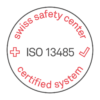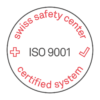RoHS Directive: Current developments and the expiration of some important Exemptions
The RoHS Directive (Restriction of Hazardous Substances) is a core element of EU legislation concerning environmental protection and product safety. Its influence is significant, especially on material selection and production processes. Furthermore, the impending expiration of certain Exemptions, primarily Exemption 6, creates a considerable challenge for many manufacturers. This article clarifies the RoHS Directive, the Exemptions, and the specific impact of upcoming changes.
What is RoHS? Purpose and scope of the directive
The RoHS Directive was adopted in 2003 by the European Union and most recently updated with Directive 2011/65/EU (RoHS 2) and Directive 2015/863 (RoHS 3). It aims to reduce the risks to human health and the environment by replacing and restricting hazardous chemical substances in electric and electronic equipment. Specifically, RoHS restricts the use of the following substances:
- Lead (< 0.1%)
- Mercury (< 0.1%)
- Cadmium (< 0.01%)
- Hexavalent Chromium (< 0.1%)
- Polybrominated biphenyls (< 0.1%)
- Polybrominated diphenyl ethers (< 0.1%)
- Bis(2-ethylhexyl) phthalate (< 0.1%)
- Butyl benzyl phthalate (< 0.1%)
- Dibutyl phthalate (< 0.1%)
- Diisobutyl phthalate (< 0.1%)
The directive applies to all electrical and electronic equipment in the defined product categories including household appliances, IT and telecommunications equipment, lighting equipment, toys, medical devices, and monitoring and control instruments.
Due to the technical challenges involved in replacing certain hazardous substances in some applications, temporary exemptions have been permitted in Annex III of the Directive. Of particular note are:
- Exemptions 6a, 6b, 6c: These limit the use of lead in alloys and metallic materials, such as steel (max. 0.35% lead by weight), aluminum (max. 0.4% lead by weight), or copper (max. 4% lead by weight).
- Exemptions 7a, 7c-I, 7c-III: These exempt, among other things, lead content in solders, glass, and ceramics.
Current status: Extension and expiration of the exemptions
The RoHS exemptions are subject to regular reviews by the European Commission. Following an extensive consultation process with industry, the European Commission submitted the final draft of the delegated acts for the RoHS Annex III exemptions, Series 6 and 7, to the European Parliament for review in early September 2025:
- C/2025/5961 final for Exemptions Series 6
- C/2025/5939 final for Exemptions Series 7a
- C/2025/5940 final for Exemptions Series 7c
Once these final drafts have been adopted and published in the Official Journal of the European Union, they will become legally binding. This is expected to happen during the fourth quarter of 2025.
Part of Exemption 6 will no longer be extended. Specifically, this means:
- Exemption 6a (lead in steel up to 0.35%): Expires 12 months after publication in the European Official Journal (ca. end of 2026)
- Exemption 6b (lead in aluminum up to 0.4%): Expires 18 months after publication in the European Official Journal (ca. mid-2027)
- Exemption 6b-I (lead in recycled aluminum up to 0.4%): Expires either 12 months after publication in the European Official Journal (ca. end of 2026) or at the end of June 2027, depending on the category.
- Exemption 6b-II (lead in aluminum for machining purposes up to 0.4%): Expires either 18 months after publication in the European Official Journal (ca. mid-2027) or at the end of June 2027, depending on the category.
The following exemptions (not comprehensive) will be extended until June 30, 2027:
- Exemption 6c (lead in copper alloys up to 4%)
- Exemption 7a (lead in high-melting-point solders)
- Exemption 7c-I (lead-containing electrical and electronic components in glass or ceramic materials)
Impact and action required for manufacturers
With the elimination of Exemptions 6a and 6b, no new products containing more than 0.1% lead in the homogeneous material may be placed on the market from the respective effective date. Possible examples include the following components:
- Mechanically stamped and bent parts used in electronic assemblies for spring contacts or housings
- Screw terminals, clamps, spring-loaded terminals in terminal blocks
- Components of relays, switches or electronic contactors where steel parts perform direct electrical or mechanical functions
- and much more.
Generally, it is also advisable to pay attention to exemptions that, although extended, may still expire later. Companies are urged to be proactive in developing and implementing alternatives to avoid supply bottlenecks. In an increasingly regulated market environment, anticipation is essential to ensure both compliance and competitiveness.
konplan has extensive experience in this field and provides customers with individual and targeted support. This includes the analysis of bills of materials at the PCB or device level, the evaluation of second-source or alternative components, and/or the assessment of the impact of a component change (supply chain, approvals, software adjustments, adaptation of manufacturing documentation, etc.).
Update from 21 November 2025: The legislation has now been published in the Official Journal of the EU under Delegated Directives 2025/2364, 2025/1802 and 2025/2363 and will become legally valid in 20 days.
________________________________________________________________________
Author:
Christof Klemenz, Project Leader
We are here for you – send us your request!
Developing together! We put your ideas into practice and accompany your projects until they are ready for the market. Get in touch with our experts now.

